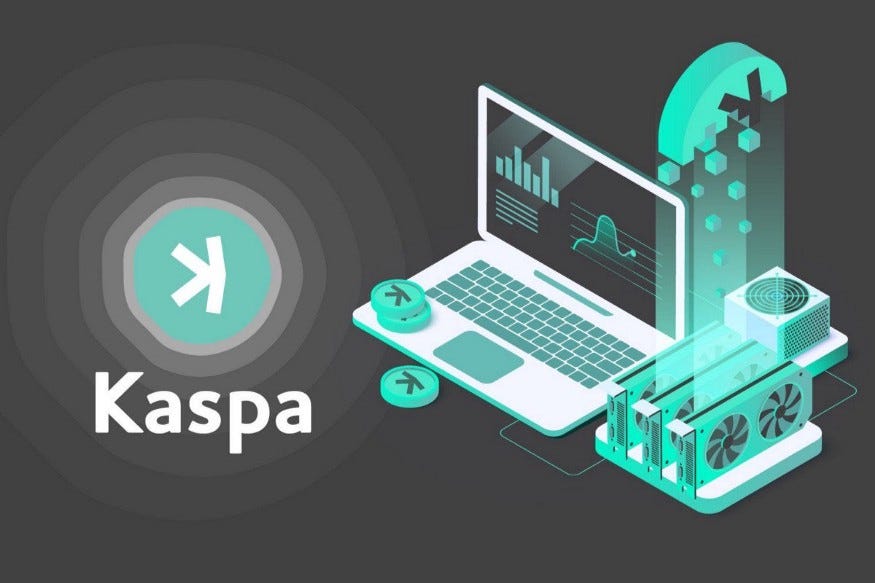Kaspa is fair-launched: No ICO — No vesting phase — No premine.
Max supply: ~28.7 billion KAS
Current circulating: ~16.28B KAS
Layer-1 Proof-of-work Coin
Currently, the TX fee is calculated as 0.0001 KAS per UTXO.
The Kaspa Monetary Policy has two phases:
- Pre-deflationary Phase: This began at the mainnet start, November 7th, 2021, and ended on May 8th, 2022. The reward rate was firstly random, in a range of 1 to 1000 KAS per block, for the first 2+ weeks, and then was replaced with a constant reward rate at the 1st hard fork: 500 KAS per second. Since the block rate was also 1 per second, the reward was 500 KAS per block. This stage lasted for six months.
- Chromatic Phase: After the Pre-deflationary Phase, the Chromatic Phase block rewards geometrically decrease over time, based uniquely on a musical 12-note scale. The initial block reward was 440 KAS. The block reward halves once per year, but smoothly: every month, the block reward is reduced by a factor of (1/2)^(1/12). The ratio of block rewards in consecutive months is the same as that of frequencies of two consecutive semitones in a tempered chromatic scale. The initial block reward is the frequency of the note A4, and every averaged year is called an octave. Here, a year (or an octave) is 365.25 days, and a month (or semitone) is precisely one 12th of a year.

Note: The policy dictates how many coins are minted per second regardless of the block rate. Therefore, should the block rate change in the future, the reward will be adjusted accordingly to maintain the same emission rate.
- January 1st, 2023, approximately 15.3B KAS will have been mined (53.3%)
- January 1st, 2024, approximately 21.9B KAS will have been mined (76.3%)
- January 1st, 2025, approximately 25.1B KAS will have been mined (87.4%)
- July 10th, 2026, about 95% of all KAS will have been mined
It will take about 36 years for the block reward to fall below 1 Sompi (smallest divisible unit of Kaspa), meaning the reward is essentially 0 (in this case, the block rate is kept as 1 BPS (Blocks per second). Otherwise, the time will shrink for log2 (new BPS) years. So, for example, if 32 BPS is established, the new zero-reward date becomes 36 — log2(32) = 36–5 = 31 years from the mainnet start.

Mining Rewards and ASICs
As stated above, the emission rewards are based on time, which means that the rewards are by KAS per second and not KAS per block. Therefore, rewards will stay on course with emission as the block rate changes.
A short emission schedule and fast deflation rate were designed to address the issue of ASIC dominance. Since ASICs on the network are ultimately unavoidable, most of the circulation will be minted by the time ASICs appear. Furthermore, a high BPS and TPS together create a low hardware entry barrier (both for pools and solo miners). If ASICs eventually emerge, the fraction of the network one would need to hold to see ROI is exceedingly smaller than required in Bitcoin. If Kaspa reaches Bitcoin proportions, it would still be possible to see a monthly block holding just a few ASICs. This privilege will not be reserved for huge pools/farms.
Tip: KASPA in Old Aramaic means “money” or “silver.”.
Feel free to comment and/or ask any questions.
You can also find me on the Kaspa discord — Bubblegum Lightning
